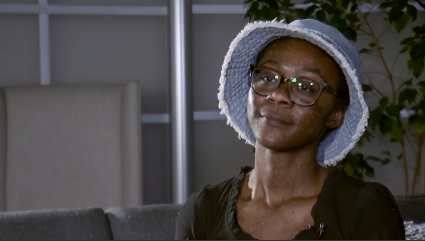
A Utah woman is sharing her harrowing experience after surviving a rare and potentially deadly skin disorder triggered by an allergic reaction to a common antibiotic. Brandy Nicole Pond, known as Nicole, is now advocating for increased awareness of these types of severe reactions, emphasizing that they can strike anyone, regardless of their health status.
The Onset: From UTI to Emergency Room
Nicole's ordeal began with a urinary tract infection (UTI). After two weeks of unsuccessful treatments, her doctor prescribed an antibiotic. She completed the full ten-day course, unaware of her allergy to the medication. The severe reaction began shortly after she stopped taking the antibiotic.
Initially, Nicole dismissed her symptoms as allergies due to a nearby brush fire in Florida, where she was traveling. However, her condition rapidly deteriorated. "What I thought was just allergies and just smoke, and allergies from that smoke, ended up being hives, and it turned into rashes, and it turned into blisters, and then it turned into this," she explained, indicating the lesions on her neck and chest. This all transpired within 72 hours of discontinuing the medication.
As her symptoms worsened, Nicole suspected various ailments, including pink eye, foot-and-mouth disease, and contact dermatitis. She attempted to alleviate her discomfort with over-the-counter remedies like Benadryl, showers, and steam masks, but nothing provided relief. The escalating pain prompted her to seek urgent care the following day.
"By the time I got to urgent care, I had a fever of 104.8 [degrees], so that’s when I started to realize, okay, something’s wrong. Something’s going on, it’s not just allergies, it’s not just me being sick," she recounted. The urgency of the situation became clear when, within ten minutes of the doctor's examination, she was transported by ambulance to a Miami emergency room.
Diagnosis: Stevens-Johnson Syndrome (SJS) and Toxic Epidermal Necrolysis (TEN)
At the hospital, Nicole was diagnosed with Stevens-Johnson Syndrome (SJS), a rare and severe disorder affecting the skin and mucous membranes. SJS is typically triggered by an adverse reaction to medication. The condition often begins with flu-like symptoms, followed by the development of painful rashes and blisters. Hospitalization is generally required for treatment.
According to medical experts, SJS is characterized by the body essentially attacking itself. "It’s when your body is kind of attacking itself. So as you can see here, I’ve got lesions on my body," Nicole explained. "It’s the body overproducing the cellular mucosal lining in your body, and it’s also like being burned from the inside out." She emphasized that the condition progresses rapidly, and treatment primarily focuses on managing the symptoms.
When the rashes and blisters associated with SJS affect less than 30% of the body, it is classified as SJS. However, if the condition progresses and involves more extensive damage to the mucous membranes, it can evolve into Toxic Epidermal Necrolysis (TEN). Nicole's condition ultimately progressed to TEN.
During her hospital stay, Nicole's body continued to produce lesions and blisters for nearly two weeks. Her condition became life-threatening, requiring her to be placed on a ventilator.
The Culprit: Bactrim and Beyond
The antibiotic Bactrim was identified as the cause of Nicole's allergic reaction. She also learned that the specific compound responsible for the reaction is not exclusive to antibiotics; it can also be found in anti-seizure medications and antidepressants.
Nicole, who considered herself healthy prior to this incident, was shocked by her diagnosis. "I had been pretty healthy. So, to find out that I got this, I thought, well, I’m so healthy, I don’t know, kind of, where this came from. It made me realize like, this could happen to anybody overnight, even if you’re healthy."
Life After TEN: A New Perspective
Nicole's experience has profoundly impacted her life, fostering a greater awareness of individuals living with chronic conditions and autoimmune diseases. She is currently adjusting to a new lifestyle and is unable to work while she recovers.
Prior to her illness, Nicole worked as an esthetician and massage therapist. She expressed concern for her clients, stating, "I had a little bit of survivor’s guilt, because I was thinking, well, who’s going to help my clients? Who’s going to take care of them now that I am out? I need to adjust to this."
Due to the rarity of her condition, Nicole has found a lack of readily available guidance and support beyond the immediate emergency care. She is now prioritizing rest and focusing on her recovery.
A Message of Hope and Awareness
Despite the challenges she faces, Nicole remains optimistic and determined to raise awareness about SJS and TEN. "There’s lots of other people who go through something tough like this, so to survivors out there with what somebody called these lucky spots, you’re not alone in this," she said.
She encourages others to share their stories and seek support. "You can’t really predict what people are thinking, but you can share your side of the story. It deserves to be shared, and it deserves to be heard," she concluded. "There’s a lot more love and support out there than you think."
Nicole also emphasized the importance of reviewing one's medication history and researching any antibiotics before taking them.
To assist with her ongoing recovery, a fundraising campaign has been established.
Key Takeaways
- Stevens-Johnson Syndrome (SJS) and Toxic Epidermal Necrolysis (TEN): Rare, severe skin disorders typically triggered by medication reactions.
- Symptoms: Flu-like symptoms, followed by rashes and blisters.
- Progression: Can rapidly become life-threatening, requiring hospitalization and intensive care.
- Causes: Often linked to antibiotics, but can also be caused by other medications.
- Awareness: Increased awareness is crucial for early detection and prompt treatment.
- Advocacy: Sharing personal stories can help raise awareness and provide support to others affected by these conditions.
Post a Comment for "Medication Inferno: Utah Woman's Rare Skin Nightmare"